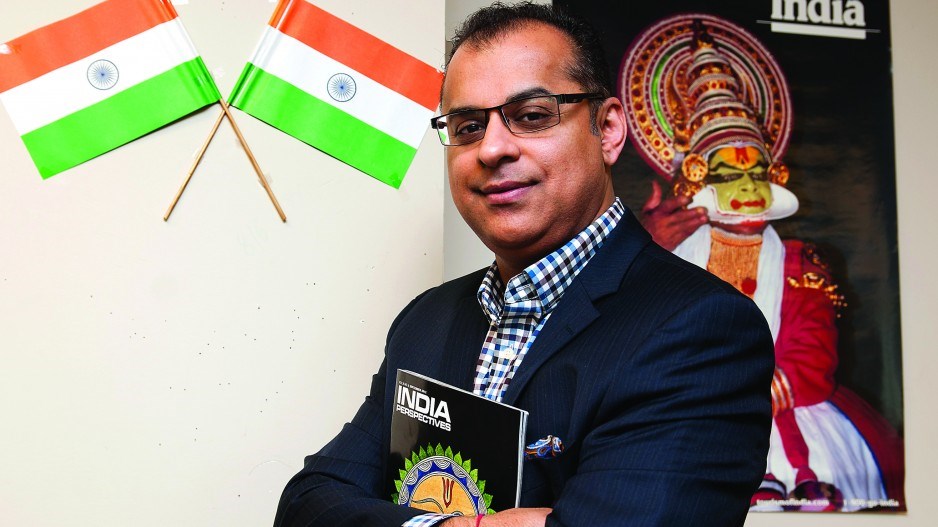When Narendra Modi rode a tsunami-like wave of popularity to become India’s prime minister last May, it signalled a potential turning point for the world’s second most populous nation. Faced with squandered international trade potential and an economy hobbled by government red tape, Modi – well known as being pro-business – declared, if elected, he would usher India into a new era of prosperity.
But in February of this year, it appeared part of Modi’s allure and promise was already starting to wear off. The anti-corruption, anti-establishment Aam Aadmi (Common Man) Party won 67 of 70 seats in the state assembly of Delhi. The vote was the first knock against Modi’s Bharatiya Janata Party (BJP), warning the leader that his economic promises must be backed up with action. Since taking office, Modi has been a frequent visitor to other countries, looking to shore up international trade relations, ultimately spurring economic growth back home. Bilateral trade between India and Canada is dismal, though the governments of B.C. Premier Christy Clark and Prime Minister Stephen Harper have made India a key emerging nation to target for stronger trade ties. Modi, who arrives in Canada April 14 and will stay until April 16, is focusing most of his trip on developing business ties with Canadian entities, both public and private. He will make a significant stop at the tail end of his trip, visiting Surrey’s Laxmi Narayan Temple. Surrey has long had a large Indo-Canadian population. According to a recent study by the community group SurreyCares, the city’s South Asian community makes up 31% of the population, and Punjabi is the main language spoken in 18% of Surrey households. Modi’s trip to Canada is significant because it’s the first time an Indian prime minister has visited the country since 1973, and his stop in Surrey is no less important. “It is truly a historic visit,” said Robin Dhir, a strategic adviser for Fasken Martineau, a Vancouver-based international business law firm. Dhir, whose parents immigrated from the Punjab region of India in 1969 to Vancouver, is also involved with Simon Fraser University’s India Advisory Council and does a fair amount of business outreach in Surrey. “When you look at Modi, he’s being treated almost like a rock star,” said Dhir. “When he did his big event at Madison Square Garden it completely sold out. And the visit to the White House was huge. So I think what it really says is that he means business with this visit.” Dhir hopes Modi and Harper will sign a long-anticipated Comprehensive Economic Partnership Agreement during his three-day stay. The agreement was initiated in 2010 when Manmohan Singh and the Indian National Congress-led United Progressive Alliance were still in power. Dhir said trade between India and Canada needs a shift in policy, among other things, to increase. He also acknowledged some Indo-Canadian business leaders have had a frustrating time trying to build international partnerships. “I think you have to remain targeted in what areas we can really co-operate on,” Dhir said. “Maybe those struggling sectors in terms of building partnerships are the ones going under the radar of both governments right now, and we can change that.” While Canada ranked as the 10th least corrupt nation on the planet according to Transparency International’s Corruption Perceptions Index in 2014, India ranked 85th out of the 175 countries. Shinder P.S. Purewal, a political science professor at Kwantlen Polytechnic University based at the school’s Surrey campus, recently returned from New Delhi and said India is still struggling with high levels of graft, something that Canadian businesses must take into account when doing business overseas. “Anyone who’s been to India has seen the corruption from the highest echelons to the lowest constable who mans the street,” Purewal said. “And that was one of the reasons why Modi and his party got elected. He personally has a very clean image … but that is not to say the party he leads is not without any corrupt people.” Purewal said the problem deepened under Singh’s leadership, and added he has yet to see any signs of improvement under Modi. “The Congress in the last five years under Dr. Singh’s rule, they had a massive amount of corruption. People hadn’t seen that amount of corruption in India, the amount of corruption and the spread of it to all ranks in all areas, was simply mind- The best way to clear obstacles to trade between Canada and India is for all levels of government to cut red tape, said India-born real estate developer Charan Sethi, who immigrated to Canada in the late 1970s and set up shop locally as the principal of the Tien Sher Group of Companies. “Get out of my business,” Sethi said. “It’s your business to run the city without getting into my business. So get out of my business, get out of trying to get into business, which the private sector should be handling, and don’t try and get into the business of doing private enterprise business.” Sethi said Modi’s visit to Surrey is a sign that the Indian prime minister has done his homework and wants to shore up support from a specific minority of the Indian population. There’s been a longstanding cultural and religious divide between Hindus and Sikhs, who are a minority in India but make up the majority of Surrey’s Indo-Canadian population. The event at the Laxmi Narayan Temple is hosted by the Vedic Hindu Cultural Society and the Hindu Sikh Forum of Canada, which looks to bridge the divide between the two faiths. It says a lot about Modi,” Sethi said. “That he is concerned or recognizes the Indian community and especially coming to the [Laxmi Narayan] temple.” |




